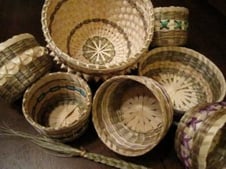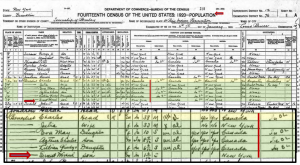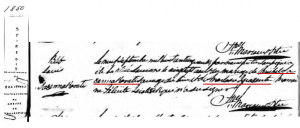While I was in graduate school, I wrote my dissertation on tribal museums and the ways they share authority with the communities that they serve. I focused my research on the St. Regis Mohawk Reservation known by the people who call it home as Akwesasne, which translates to “Where the Partridge Drums.” I was honored to spend many years getting to know the place and its people.
“You are on Mohawk Land.”
You know you are in Akwesasne as soon as you arrive because there are large signs on the roads leading into the reservation that read “You are on Mohawk Land.” They have good reason to assert their claim to the land since they have had to defend their right to live and move freely within their own reservation for centuries.
Located within New York, Quebec, and Ontario, the reservation has an international border running through its center and multiple governments with influence over it. Border crossing is such an everyday part of life there. While I was doing my research, I accidentally crossed the border with one of the basket makers I was interviewing, who took me to see where the best birch trees grew—good thing I had my passport!
As a genealogist, you need to be aware of the various ways both the U. S. and Canadian governments recorded or did not record populations of Native nations.
Knowing the historical and political environment at Akwesasne is essential to doing just about anything there, and that extends to genealogy. Records for the same individuals are recorded in both the United States and Canada, even though the families never leave the reservation. As a genealogist, you need to be aware of the various ways both the United States and Canadian governments recorded or did not record populations of Native nations.
. . . they lived on the reservation and yet were still considered aliens.
I was able to find Ernest on the 1920 U.S. Federal Census, when he was not yet two-years-old. He was living with his parents, Charles and Julia Benedict, and his siblings on the St. Regis Reservation in the township of Bombay on the New York side. The census records that Ernest was born in New York, as was his mother, but his father and siblings were born in Canada. It also lists those born in Canada as being aliens. Keep in mind that they lived on the reservation and yet were still considered aliens. The 1915 Census of New York enumerated American Indians separately and provides a bit more information about their Mohawk culture. The families were recorded matrilineally, and Julia Benedict was the head of her household on the St. Regis Reservation. She, as well as all her children, was a member of the Wolf clan, since children inherit their clan from their mother.
As I worked further back in time with this family in Canadian records, I located birth and marriage records that indicated the family lived primarily on Cornwall Island, an island on the St. Lawrence River between the United States and Canada, though it technically rests on the Canadian side of the border. I was able to locate the death record for Ernest Benedict’s grandfather, Louis Benedict, who died on Cornwall Island, Quebec, in 1945. The record included his parents’ names and his birth date, which allowed me to find a baptism record for him within the St. Regis Catholic Church Mission records. This record from 1850 included his Mohawk name, which looks to be Sawennakarati, though I may need some of my Mohawk friends to help me with the spelling.
The St. Regis Catholic Church Mission was established at Akwesasne in 1755, and there are several sacrament records within its collections. I hope to be able to continue to map out the Benedict family within these records to honor their individual story, while learning more about Akwesasne and the people who call both sides of an imposed border home.
Share this:
About Meaghan E.H. Siekman
Meaghan holds a Ph.D. in history from Arizona State University where her focus was public history and American Indian history. She earned her B.A. in history from Union College in Schenectady, New York, the city where she grew up. Prior to joining the NEHGS team, Meaghan worked as the Curator of the Fairbanks House in Dedham, Massachusetts, as an archivist at the Heard Museum Library in Phoenix, Arizona, and wrote a number of National Register Nominations and Cultural Landscape Inventories for the National Park Service. Meaghan is passionate about connecting people with the past in meaningful and lasting ways. She enjoys finding interesting anecdotes about an ancestor to help bring the past to life.View all posts by Meaghan E.H. Siekman →


